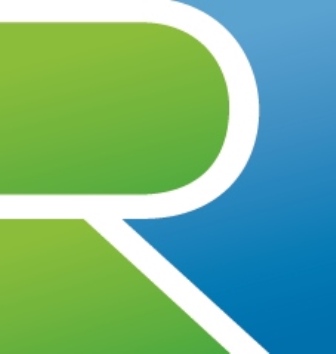© 2020 Randall Resources Int’l
Dating. Relationships. Customers. Remember those early teen-age years when you wanted to ask someone out on a date but were too shy—too scared—too confused? You wanted to get to know that special “someone.” But it all seemed too complicated! You didn’t know what to say or what to do. In fact, often times you felt tongue-tied!
Similarly, working with clients and customers is much the same as dating. You want to get to know people. You want to let them know that you can help them. But sometimes it seems too complicated! How do you start to unravel the intricacies of a client relationship?
Start with the understanding that each client is an individual, dynamic relationship. And with each individual customer comes the desire to be understood and related to, not “sold to.”
Relationship. It’s that living and dynamic connection that either grows or dies. And you play a part in how that relationship develops throughout three distinct stages:
1. Attraction
2. Courtship
3. Commitment (Loyalty).
The Attraction Stage
In any relationship, it’s the attraction stage that gets you noticed. Yes, this is the fun, flirty stage. You need to be creative! The customer attraction stage starts with knowing who YOU are—and who you are not—in order to attract the customers that you can best serve. After that, it’s about knowing where those customers hang out. Once you understand who you are and who you can best serve, then it’s your willingness to hang out with them in a way that catches their attention in relation to their personality and style (their needs)! Are they flamboyant, pragmatic, relational, or detail-oriented?
Q: What type of customers are you aiming to attract? Everything you do to attract that customer relationship will hinge on your answer to this question. Before you read further, take a few minutes to think and write out the answers to the following 5 questions:
1. Who are we as a business?
2. How can we best serve people?
3. What customers would most benefit from the skills / services our company offers?
4. What are their characteristics of those customers?
5. Where would we go to find those customers?
Now, if you want to build a “one-event / one-night stand” client relationship, by all means jump directly over the next stage, the courting stage. However, should you desire to build a valuable, long-lasting and sustainable relationship, you will need to purposefully move from the attraction stage into the courting stage.
The Courtship Stage
In every valued relationship, you will need to court or “woo” an individual (i.e. client). During that courting stage, it’s about intentionally pursuing that individual, spending time with that person, getting to know their likes and dislikes, learning how they like to communicate, understanding their needs, having fun with them, and engaging in conversation with them about their future hopes and dreams.
Likewise, in the client “courting” relationship, it’s also about spending time with your client so you can get to know them and they can get to know you. (This may be in the form of marketing efforts or direct conversations.) It’s about learning what is important to your client ( or potential client), creating an environment of listening, learning how they like to communicate, understanding their needs and how you can help them, and having conversation with them about how to achieve their current and future hopes and dreams.
Yet, how many times have you given up on the relationship because you by-passed, or did not fully understand, the purpose of the courting stage?
Sadly, but true, when working with our potential clients, most of us become a statistic in one of the following categories (Source: National Sales Executive Association):
48% of sales people never follow up with a prospect.
25% of sales people make a second contact and stop.
12% of sales people only make three contacts and stop.
Only 10% of sales people make more than three contacts.
2% of sales are made on the first contact.
3% of sales are made on the second contact.
5% of sales are made on the third contact.
10% of sales are made on the fourth contact.
80% of sales are made on the fifth to twelfth contact !
Notice, this last statistic: 80% of sales are made on the fifth to twelfth contact! Customer communication is like courtship—it takes multiple conversations to build a relationship of trust. Valuable relationships take time!
Q: What purposeful actions are you taking each day to build relationship with your clients? As our business coach, Mark LeBlanc, used to say: Every day you need to consistently engage in high value activities (HVAs). What is a high value activity that meets the needs of your clients?
The Commitment (Loyalty) Stage
If the courtship stage has been consistent, creative, and has allowed for the needed time for trust (this time frame is the client’s to determine), then the relationship will begin to move toward the commitment (loyalty) stage. What does the commitment (loyalty) stage involve?
Let me caution you. It does not involve taking your hand off the wheel and going into auto-pilot mode. It’s not a time to take this relationship for granted. In fact, in order to enjoy a most productive and satisfying relationship, the commitment stage will involve much thought, time, and work! But it is time and work well spent. Statistics reveal that attracting a new customer costs 5 times as much as keeping an existing one. (2010. Lee Resource.) So you definitely want to be creative in adapting to and addressing the needs of your current customers.
As Mahatma Gandhi once said:
“A customer is the most important visitor on our premises,
He is not dependent on us.
We are dependent on him.
He is not an interruption in our work.
He is the purpose of it.
He is not an outsider in our business.
He is part of it.
We are not doing him a favor by serving him.
He is doing us a favor by giving us an opportunity to do so.”
Even in this commitment stage, a customer does not have to do business with you. In this stage, a customer begins to measure his / her experience with you—the honeymoon is over: real life situations set in; expectations need to be considered. Unexpected conflicts need to be dealt with in a timely, respectful, and tactful manner. While you may do everything “by the book” and as perfectly as you think can be done, as you deliver what you offer. (Kathleen Randall, Customer Service Excellence: 2009.)
If a customer’s experience with you is below what is expected, that customer will likely not continue to do business with you. The relationship will end. But the negative marketing will just begin. According to the 2010 White House Office of Consumer Affairs, a dissatisfied consumer will tell between 9 and 15 people about their negative experience. About 13% of dissatisfied customers tell more than 20 people!
If the customer’s experience is satisfactory and what the customer expects, that customer may consider coming back to do business with you. They will however, shop around, and will not necessarily consider loyalty to you or your company.However, if the customer’s experience exceeds what was expected, especially when a conflict has been addressed and resolved, that customer will not only keep coming back, he / she will tell 4 to 6 people about the exceptional experience! (2010. White House Office of Consumer Affairs.)
That’s where the E3 Factor comes in: Experience Exceeding Expectations, has now created a relationship of trust wherein a customer chooses to continue a more loyal relationship. And this loyalty can be measured—not just in words, but in numbers—in monetary profitability measured by the lifetime value of each customer transaction.
Q: In caring for and maintaining the relationship with loyal customers, what sets your company apart from your competition?
Three stages of a relationship: Attraction, Courting, and Commitment / Loyalty. Each stage involves distinct needs and purposeful attention to relationship—not just a customer service issue built on procedure, but rather a strategic use of time and trust that builds loyalty. And Customer Loyalty is what keeps a business thriving despite the economy.
Q: What are you doing to enhance your relationship with your customers? What is your organization doing to strategically grow a culture that is built on relationships?
Give Kathleen a call. She can provide you with the insight, tools, and strategies to help you identify, grow, and communicate a culture where customers know you are committed to relationship with them!

